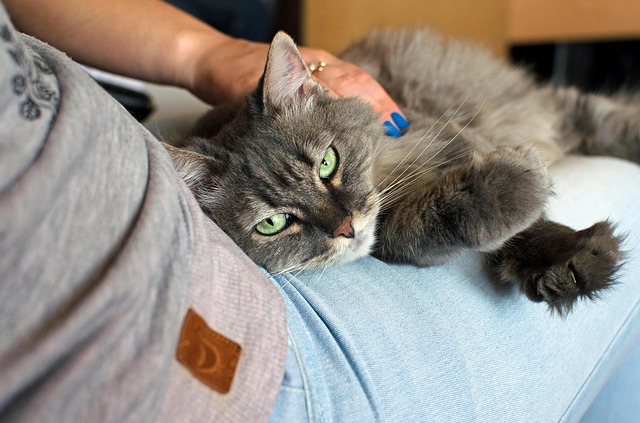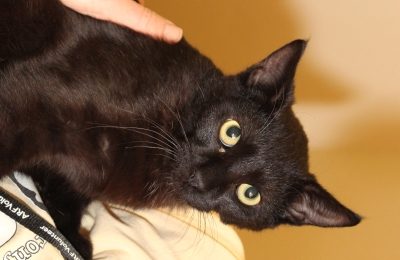As a cat behavior consultant, I’m always looking for ways to improve the effectiveness of the services I provide for my clients, and to increase the likelihood that they will follow the advice I give them. This is an ongoing struggle, as the urge to give cat owners information about EVERY SINGLE THING they need to know about cats can be rather strong. When I first started consulting, I provided my clients with 10-page written plans, expecting them to read every word, and follow every last instruction. I became increasingly disappointed when I followed up and learned that rather than educate them, I completely overwhelmed them.
Before you can give people advice, they have to seek it out! Many people report that their cat has undesirable behaviors, but many people choose to live with the problems, thinking cats are untrainable. Others may instead choose to rehome their cat, and some cats certainly lose their homes and lives due to behavior problems. Humans seem to be more motivated to seek help if the behavior problem is perceived as annoying or dangerous (e.g., aggressive behaviors toward humans or other pets, house soiling).

Some people may seek the help of a veterinarian, veterinary behaviorist, or behavior professional to try to solve their cat’s behavior problem. Unfortunately, research has shown compliance with behavior recommendations is generally low (Note: this is not unique to behavior advice! It turns out that people don’t follow the advice of their doctors or lawyers either).
Environmental modification is one of the most common recommendations when addressing behavioral problems in cats, primarily because humans often make a few mistakes when setting up their home with cats:
- Not having enough resources to support the number of cats they have
- Clumping all the resources in one area (e.g., all the litter boxes or food dishes together, or food near the litter box, etc.)
- Not using resources that the cats will like (for example, large enough litter boxes and scratch posts, not using soft clumping litter)
- Not providing a cat with enough safe spaces and vertical space
Even after being made aware of cat’s environmental needs, not all cat owners make the change. Why?
New research (How Cat-Behavior Advisors Can Improve Clients’ Willingness to Adopt their Advice: An Investigation of Advice Severity, Advisor Credibility, and Clients’ Self-Identity) explored some of the reasons that people might or might not follow behavioral advice, through an interesting survey design. Participants (703 cat guardians) completed a survey where they were presented with a scenario where they would be given cat behavior advice.
The advice could come from someone less credible (a neighbor with cats) or highly credible (a cat behavior advisor with science-based training).
The advice could be mild (meaning only a few changes were recommended, specifically providing a scratching post, cleaning the box, and playing with the cat daily) or severe (including providing scratching posts in every room, adding three litter boxes that are scooped twice a day, adding vertical space, and separating food dishes).
Each participant received one scenario with one of the possible combinations:
- less credible advisor-mild advice
- credible advisor-mild advice
- less credible advisor-severe advice
- credible advisor-severe advice
Participants were asked how they felt about following the advice, how likely other cat guardians would be to follow the advice, how difficult it would be to follow the advice, and how likely they would be to follow the given advice. They were also asked how strongly they identified as a cat guardian. They were also asked how credible they found the advisor, how extreme they thought the behavior advice was. Finally, they were asked some questions about how they set up resources for their own cats and whether their cats had any behavior problems.
People more likely to follow recommendations if it came from a highly credible advisor. They were also more likely to follow the mild advice than the severe advice. People who strongly identified as a cat guardian were also more likely to comply with advice; and they were more likely to think that other cat owners would do the same, suggesting some “social pressure” to be a good cat owner.
Although this is a scenario and may not predict perfectly what people will do in real life, it does give us interesting food for thought in how we approach consulting and helping people who are experiencing behavior problems with their cats. The authors of the study also provided some useful advice (bolded below).
Previous studies have found that cat owners were less likely to set up the food and water according to recommendations (e.g., separate food areas, food in quiet locations) or clean the litter box at the recommended frequency, but they reported regular play and petting with their cats. Some aspects of care are either easier or more rewarding for cat owners to do.

To this end, it is more likely that cat owners will follow advice if it does not seem too “severe.” People may only be willing to make certain changes, or may not make any changes if they are given too many suggestions. Dog owners seeking professional help for their dog’s separation anxiety were most successful if they were given fewer than five things to do. Behavior consultants should take care to start with simple, achievable goals for their clients, perhaps increasing the “ask” once their clients are on board.
Behavior consultants should be credible: making sure they have received appropriate training or certification, and having other “signals” that indicate professionalism, such as being part of professional organizations, working under a mentor, listing credentials on their website, and behaving in a professional manner during consultations. Solid communication skills are a must.
Use social pressure: testimonials from clients and examples of clients implementing behavior advice can increase social pressure. However, the examples should be relatable and not feel too extreme.
The tricky part is that sometimes as a consultant, you feel like a slash and burn approach is necessary. Sometimes there are so many things that need to be fixed that it’s hard not to make a laundry list. However, it may actually be more effective to start with some small wins than try to get an owner to change everything…in which case, they may actually respond by doing nothing.
Resources
Alho, A. M., Pontes, J., & Pomba, C. (2016). Guardians’ knowledge and husbandry practices of feline environmental enrichment. Journal of applied animal welfare science, 19(2), 115-125.
Takeuchi, Y., Houpt, K. A., & Scarlett, J. M. (2000). Evaluation of treatments for separation anxiety in dogs. Journal of the American Veterinary Medical Association, 217(3), 342-345.
van Leeuwen, E., Ter Mors, E., & Stolting, M. (2022). How Cat-Behavior Advisors Can Improve Clients’ Willingness to Adopt their Advice: An Investigation of Advice Severity, Advisor Credibility, and Clients’ Self-Identity. Journal of Applied Animal Welfare Science, 1-15.



MUST GIVE ALL ADVICE!
As a cat behaviourist and consultant, I recognize the struggle. I’ve been thought to write full and lengthy reports for owners, including history, a behavioural analysis – linked with medical conditions if present, and a comprehensive behavioural plan. Likewise, those reports were easily 10 pages. Not only did it take a lot of my time, but it simply proved to be ‘too much’.
I stopped doing that. Now, during the consultation, I briefly write down the most important stuff that must be addressed (e.g. for urination issues: litter box management) and I give or mail clients the hand-outs needed for their situation.